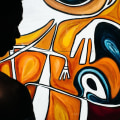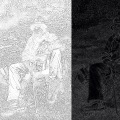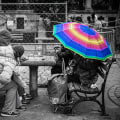Capturing everyday life is a fascinating way to document the world around you. Whether it's capturing candid moments of people in their daily lives, capturing the beauty of nature, or documenting a particular event or occasion such as a wedding, wedding photography allows you to capture life as it unfolds. Documentary wedding photography is a unique style of photography that captures life in its raw and authentic form. This type of photography captures the everyday moments and events that happen in our lives, giving us a glimpse into the lives of people around the world. Documentary wedding photography is often a powerful and evocative way to tell stories and capture important moments in time. It can be used to highlight social issues, show the beauty of life, or simply document the mundane moments we take for granted.
No matter what your subject matter is, documentary street photography is an art form that can be used to create stunning images that express emotion and tell stories. In this article, we'll explore how to capture everyday life through documentary street photography. We'll look at some tips for getting started and how to use this style of photography to capture stunning and unique images.
Editing and Post-Processing
Documentary street photography captures everyday life in all its complexity, and editing and post-processing are essential to making the most of your photos. Editing involves cropping, sharpening, and color grading your photos to make them more visually appealing and to highlight the subject of your images. Cropping is the process of trimming away parts of an image to focus on the main subject.This can be done to remove distractions from the background, or to change the composition of the image. Cropping can also help draw attention to your subject, by creating a more balanced composition or leading the viewer’s eye. Sharpening is a way of increasing the contrast between edges in an image, making them appear sharper. This helps to bring out details in your photos and make them look more crisp and clear.
Color grading is a way of manipulating the colors in an image to create a certain aesthetic. This can be used to create a certain mood or atmosphere, or to make an image look more saturated or desaturated. When editing and post-processing your photos, it is important to create a cohesive body of work. This means ensuring that all of your photos have a consistent look and feel, so that they can be easily recognized as being part of the same series.
This will help to create a stronger impact with your images, as viewers will be able to recognize the connection between them.
Tips for Capturing Great Shots
Documentary street photography is all about capturing the everyday life of people and places around you. To be able to do this effectively, it's important to understand some of the key composition tips that will help you create great shots.Rule of Thirds
The Rule of Thirds is a basic compositional guideline that is used by many photographers.It involves dividing the image into thirds horizontally and vertically, creating nine parts. Placing the subject or important elements along these lines or at the points where they intersect creates a more visually pleasing composition.
Leading Lines
Leading lines are lines in your composition that lead the viewer's eye through the image towards the main subject. Examples include roads, pathways, walls, and other lines in the environment. Using leading lines can help bring focus to the subject and draw attention to it.Framing
Framing is another useful tool in documentary street photography.It involves using elements in the environment to frame your subject, such as windows, doorways, trees, and other objects. This can help to draw attention to the subject and create a more interesting composition.
Negative Space
Negative space is the area around the subject in an image that helps to bring focus to it. Using negative space effectively can help create a more balanced composition and emphasize your subject.Color
Color is an important element of documentary street photography, as it can be used to tell a story or draw attention to a certain element. Understanding how colors interact and how they can be used to create an emotional response can help you create more powerful images.Authentic Emotion
Capturing authentic emotion in your photos is key for documentary street photography.It's important to be aware of body language and facial expressions, as well as the overall atmosphere of the scene. This can help you capture emotions in a more natural and genuine way. Documentary street photography is a powerful way to capture everyday life and tell its stories. By carefully composing shots, thoughtfully editing, and paying attention to detail, you can create beautiful images that showcase the beauty and complexity of everyday life. Use these tips and techniques to get started and find your own unique perspective on capturing everyday life.








